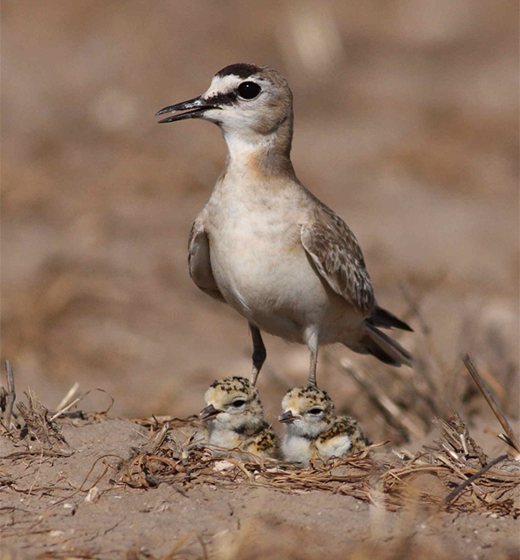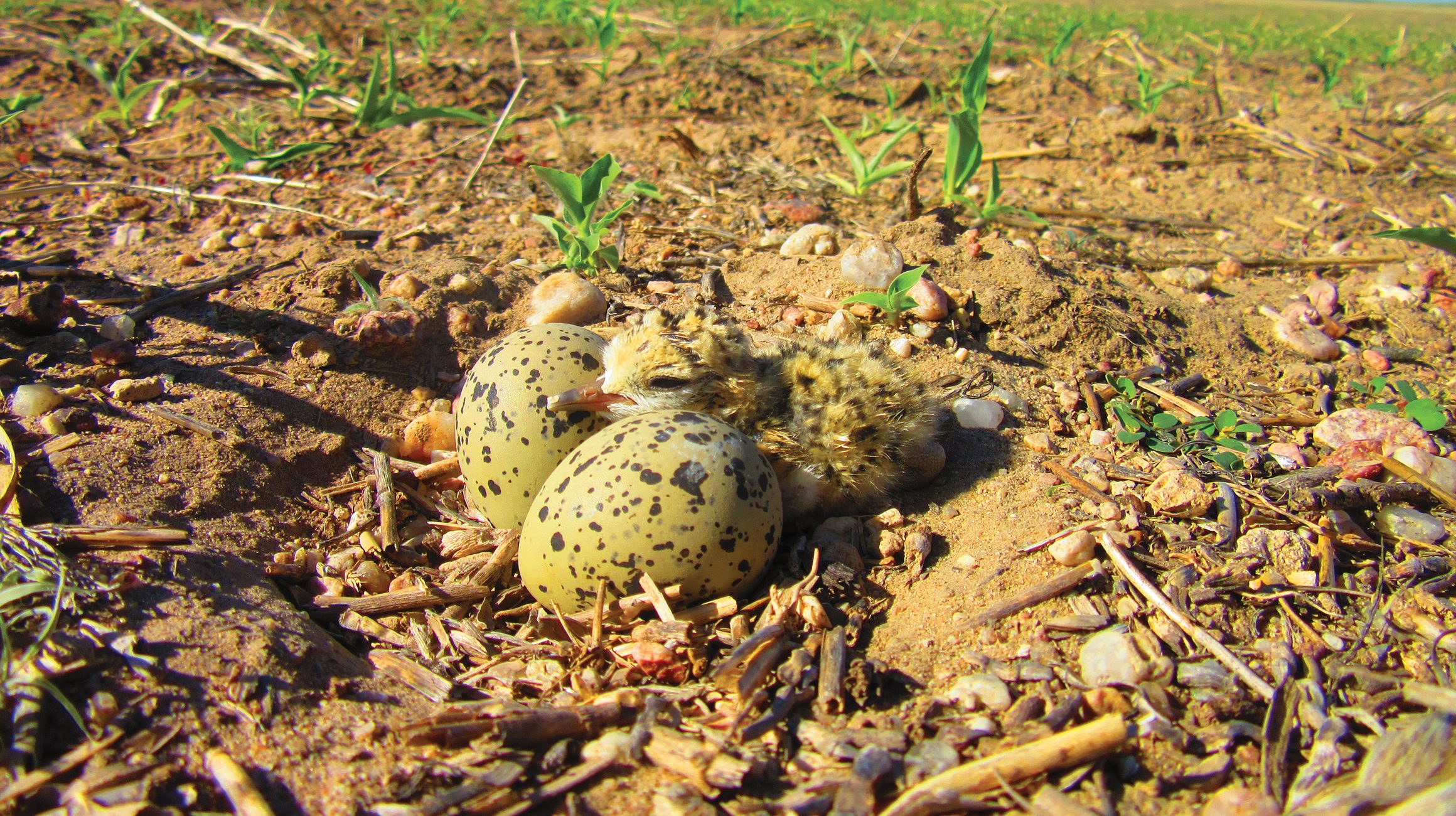Mountain Plovers (Charadrius montanus) are migratory North American shorebirds that nest on the ground in sparsely vegetated rangelands, prairie dog towns and farmland, including fallow farm fields in the Great Plains. These birds are on the 2016 State of the Birds Watch List of species most at risk of extinction unless conservation action is taken due in large part because of shortgrass habitat loss, including prairie dog town removal. In addition, farmers risk accidentally destroying Mountain Plover nests when they till their fields because these nests can be difficult to see. However, farmers can also be the front line of Mountain Plover nest conservation – and human dimensions research can be a key part of making that happen.
To help protect Mountain Plover nests from accidental loss, Bird Conservancy of the Rockies began working with the Nebraska Game and Parks Commission and farmers in Nebraska to mark Mountain Plover nests during the breeding season. In 2001 a local 3rd generation farmer was hired fulltime to assistance Bird Conservancy staff with landowner outreach. He has been working with Bird Conservancy for the past 15 years on Mountain Plover conservation, and his role is one of the reasons for the success of this effort, as he has recruited 80 landowners into the program. He then helped launch the nest marking program in 2003, and in 2006 Bird Conservancy of the Rockies started paying farmers to mark their fields to further boost enrollment.

Mountain Plover with chicks in a crop field. Photo courtesy of Colin Woolley.
In fall 2012, Bird Conservancy started partnering with social scientists at Virginia Tech to understand farmer participation in the nest marking program. To do this, researchers developed a mail survey to understand why farmers were participating in the nest marking program and whether or not farmers would be willing to continue marking nests if payments stopped.
Research Insights
On average, farmers reported that they participated in the program because of intrinsic motivation to do so (in other words, they find it enjoyable and satisfying, and it aligns with their conservation ethic), not because of the financial incentive.
The majority of farmers indicated that even without payment they would be likely to continue to allow Bird Conservancy of the Rockies staff on their properties to locate and mark nests, and for some farmers to locate and mark nests themselves.
Outcomes
In conjunction with other recruitment tactics, such as workshops and direct visits with farmers, participation tripled. In fact, from 2006 to 2015 an average of 79 nests were found each year, 16% of which were found by farmers (Bird Conservancy of the Rockies, unpublished). Bird Conservancy also examined the role nest marking played in Mountain Plover fledging success, and staff are currently working on writing up those results.
Since the human dimensions research was conducted, funding constraints have precluded Bird Conservancy of the Rockies expanding the nest marking program, which is currently on hiatus. However, findings from this research show that financial incentives may not affect nest marking behavior since many farmers were intrinsically motivated to do so. In looking for funding to continue conserving this species, Bird Conservancy is thus prioritizing graduate student research that can answer bigger conservation questions and exploring options using Farm Bill funding to introduce practices for nest conservation on farmlands.
To learn more about this study, click here or contact Angela Dwyer: angela.dwyer@birdconservancy.org.

